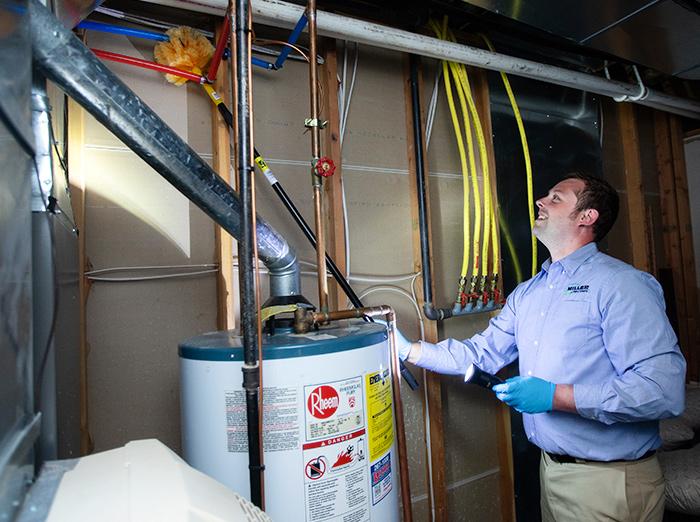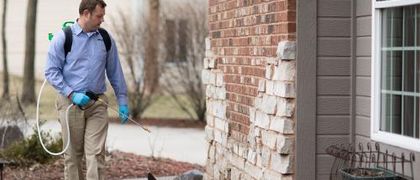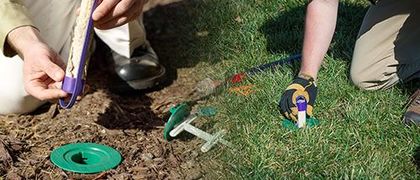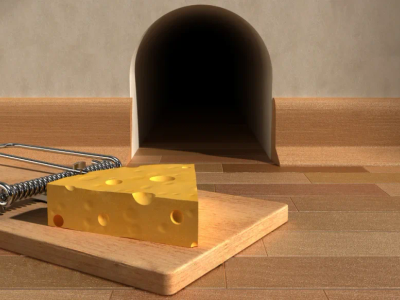When taking on the unnerving and often mysterious task of locating mice nests, it is helpful to approach this task with the precision of a detective like Sherlock Holmes, who uses his keen observation skills and methodical inspection methods to solve even the most complex mysteries. But, unlike Sherlock, you can start with some knowledge of your adversary already in mind. That is what we're going to provide today. We will dig into the nesting behaviors of mice, including mouse nest composition, talk about common hiding places, and share how to deal with nests when you find them. With that said, let's get started.

What materials do mice use for nesting?
You might not realize you've found a mouse nest when you see one. Sometimes, nests are made of common materials that you might find in your home. When you see these materials in a fluffy ball tucked into the corner of a cardboard box stored in your attic, you might overlook the nest. You may also miss the rodent droppings that look like shiny black grains of rice. But a good detective evaluates the evidence and considers the possible cause behind the fluffy mass. Here are a few common materials mice use to make their nests. This will help you recognize their nests more easily.
- Paper products
Mice rip up newspapers, old letters, or discarded wrappers. They are particularly fond of using any form of shredded paper to build their nests.
Fabrics
Mice use torn pieces of cloth. They'll mostly get these from boxes in storage.
Stuffing
Mice get into couches, chairs, mattresses, and other furniture that have soft material inside.
Insulation
Mice use the insulation within walls and the attic to form a warm, cozy lining for their nests.
They often collect materials from within your home and use natural materials from outside, such as dried leaves, twigs, and grass. Mice will gather several materials together to make their nests. Often, these nests look like a fluffy mess.
Where you're likely to find a mouse nest
The placement of a mouse nest is strategic. Mice are commensal rodents that partially rely on us for survival, and their nesting sites reflect a preference for warmth, safety, and proximity to food. Here are a few places mice nests are often found:
- Behind walls and under floors
Mice find their way behind walls and under floors to establish nests through small openings; they may also chew their hole to access these areas. Although you cannot visibly inspect these areas, keep an eye out for holes. You may also hear noises from those areas at night when mice are active. - In attics, crawl spaces, and basements
As rooms in your home go, attics and basements are two of the best place for a mouse to live. A mouse prefers seclusion and warmth. But, if these areas are too far from a food source, mice may migrate into wall voids rather than stay put. What this means is you'll find old, discarded nests. Crawl spaces are another popular nesting spot for mice because they’re warm, damp, and usually close to food sources. - Garages
Garages are another prime location for mice to hide and nest. They are usually less disturbed and contain boxes and other items perfect for nesting in or making nests with. Additionally, they are close to a food supply and may even house pet food, bird seed, and other edible items for mice to feed on. - Inside furniture
Mice get nesting materials from furniture, but they also live inside couches, chairs, mattresses, and other furniture, particularly items in storage. You may also find them inside pillows and outdoor patio furniture cushions. Look for holes and check for rodent droppings. - Kitchens
Kitchens and pantries are magnets for mice. They create nests under kitchen sinks, behind appliances, inside pantries, in the ceilings, and behind the walls—anywhere they can get to could be a potential nesting site in the kitchen. An excellent first step is to drag your oven or fridge away from the wall and peek. You may immediately see evidence of trouble.
Use these examples to help you zero in on the mouse nests in your home. Keep in mind that mice hide in many more places just like these.
What to do if you find a mouse nest
The first order of business when finding a nest is not to handle the materials. Wear protective gloves and a mask before tackling clean-up. Mouse droppings can contain pathogens that can cause human illness.
Once the nest is cleaned up, are you done? Sadly, no. Removing a nest will not stop your mouse infestation. If you want the mice gone, you must address the root cause. In other words, you need to locate and fix potential entry points AND ensure the entire rodent population has been eradicated. It’s not as simple as it sounds, either.
Contact Miller Pest & Termite for help with mice
You don't have to deal with mice on your own. In fact, it's best that you don't. Mice are notoriously difficult to control because they are prolific breeders. Plus, they have abilities that allow them to hide in difficult-to-reach locations, and they can avoid traps set for them. Contact Miller Pest & Termite and find out if you're in our Midwest service area, which includes Des Moines, Kansas City, and Omaha.
We provide comprehensive rodent control services to deal with mouse infestations quickly, and we offer our Miller Guard, our home pest control plan, for ongoing rodent and insect protection.
Ongoing Home Pest Control Recommendation
Miller Guard
Our signature Miller Guard pest control plan is designed to eliminate and prevent insect and rodent problems by targeting pest entry and exit points for maximum effectiveness. It includes an initial premium interior application, exterior applications, web removal, and wasp nest removal.
- Service Every Other Month*
- 29 Pests & Services Covered
- Initial Premium Interior Application
- Exterior Applications
- Insect & Rodent Control
- Year-Round Protection
- 100% Satisfaction Guarantee
Starting at:
$4999A Month
Free Quote Or Call (515) 518-8864

Additional Miller Guard Details
Pests Covered: Asian Beetles, Boxelder Bugs, Carpenter Ants, Carpet Beetles, Centipedes, Earwigs, Fleas, Fruit Flies, Grain Beetles, Hornets, House Ants, Indian Meal Moths, Mice, Millipedes, Pill Bugs, Rats, Roaches**, Silverfish, Spiders***, Stink Bugs, Wasps, Weevils, Yellow Jackets
- Pricing does not include initial fee
- 1-year service commitment
- Must have credit card on file
*Not including Jan/Feb
**American, German & Oriental
*** Venomous & Non-venomous
Get information or schedule service by completing the form below or calling your local office! While you are now equipped to find mouse nests in your home, it may surprise you how difficult it is to get rid of these pests. Just when you think you've dealt with the problem, you find more evidence.
Contact Miller Pest & Termite for expert assistance. Having a professional handle a tricky problem like this is a much better solution!


Get Help Now!

















